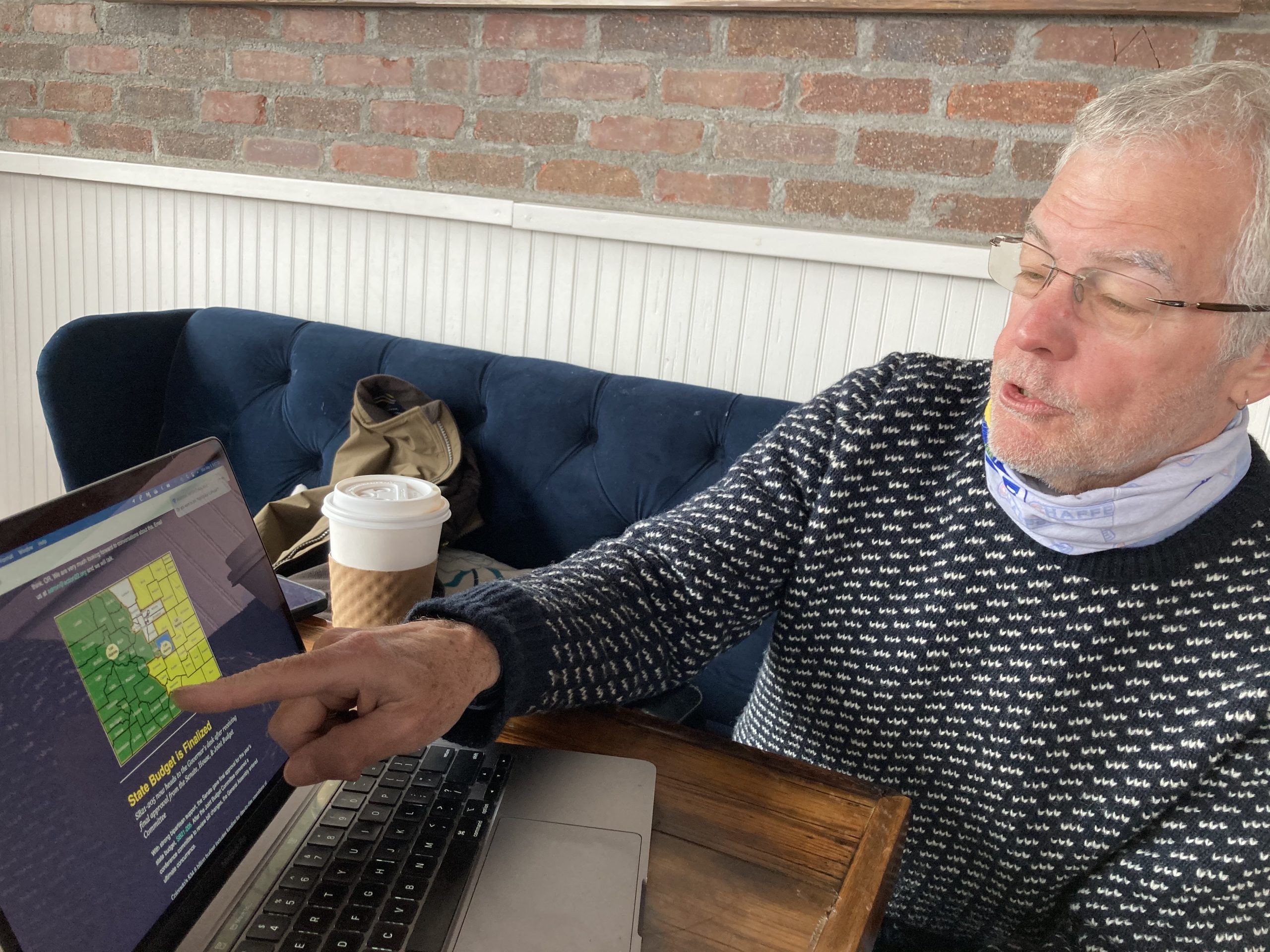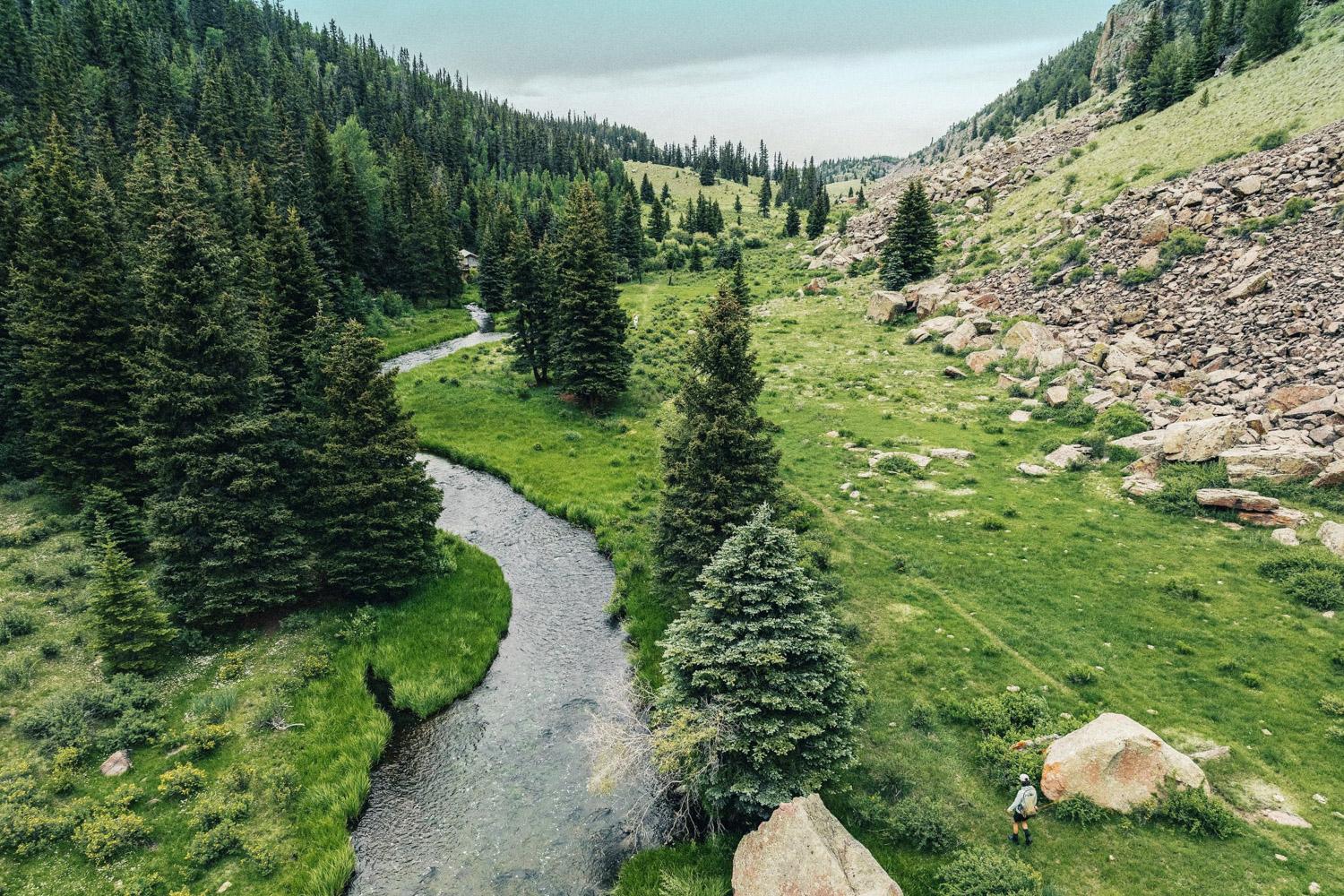
With Colorado's impending redistricting process about to redraw political lines around the state, leaders in lots of places are thinking about how they want to be represented in Congress.
For the rural mountain counties which, along with urban El Paso County, make up the current 5th Congressional District, it could mean big changes.
After a decade of population growth in Colorado Springs, the state’s second largest city, El Paso County might now have enough residents to be its own district. And that suits Chaffee County Commissioner Keith Baker just fine.
“We're more rural, even though we're on the periphery of the front range, mega region as it's called,” he said.
Baker has been thinking about redistricting pretty much since the last round wrapped up a decade ago. He was a strategic planner in the U.S. Navy before he and his wife decided to retire in Colorado.
“We feel that — or at least most members of our community feel that — we have more in common with counties that are in the 3rd [Congressional District], now, than we do with the counties in the 5th,” the Democrat said.
Differing views among mountain counties
Walking around the streets of Buena Vista, a quaint tourist town along the headwaters of the Arkansas River, he lays out some of those common interests with the sprawling Western Slope district: agriculture, mountain communities, outdoor recreation, watersheds.
It’s a feeling that’s shared in neighboring Fremont County. County Commissioner Kevin Grantham is “99 percent sure” Fremont will find a new congressional home. But unlike Baker, he’s looking east.
“Personally, my preference would be to be put into the fourth [district],” he said, “because we have more in common, honestly, with the Eastern Slope, the Eastern Plains, the Arkansas River corridor, agriculture, et cetera, than we do the Western Slope.”
Strangely enough, another common interest his county shares with the Eastern Plains is prisons. In Fremont County, Canon City hosts several federal and state facilities, while CO-4 has state prisons dotted in several communities.
How the districts must be drawn
All this talk about common interests — which ones to prioritize, and how — is important because it’s one of the criteria the independent commission drawing the new congressional districts must consider. Altogether, they must draw districts that are equal in number, contiguous, compact, comply with the voting rights act, and preserve “communities of interest.” The panel must also try to maximize the number of politically competitive districts.
It’s going to be tough work, said Grantham, who was president of the Colorado Senate when Amendments Y and Z were put on the ballot and passed. He hopes the process will be as “unpolitical as it's promised to be.”
A lot of people and groups are weighing in because these boundaries can affect who speaks for them in Congress and how well their interests are represented.
Sara Blackhust, president and CEO of Action 22, which represents communities in southern Colorado, has been working with similar groups across the state to propose an idea. “What we really needed to push was to rural, purely rural districts,” she explained. “And that was the only thing that was going to make sense.”
In her map, all the mountain counties in the current fifth district — save El Paso — get split between the two sprawling 3rd and 4th congressional districts.
“What matters most to all of our citizens is that they get adequate and reliable and, honestly, relevant representation,” Blackhurst said. And she thinks this plan does that best for rural communities.
But prioritizing more competitive seats could help with that, too, believes Sara Hagedorn, an assistant Professor of Political Science at the University of Colorado at Colorado Springs.
“I think that means a lot for CD-5, because at this point we are not competitive, right? This is not a competitive district. Neither is district one. Neither is district two,” she said.
Colorado has a lot of safe seats; while District five has only ever been represented by Republicans, CO-1 in Denver and CO-2 based in Boulder are shoo-ins for Democrats.
The last House seat to change parties was Colorado’s sixth, which flipped from Republican to Democrat in 2018’s blue wave. The closest race in 2020 was in the third district, where Rep. Lauren Boebert beat Democrat Diane Mitsch Bush by six points to hold the seat for her party.
Competitive districts could force congress members to be active
In Hagedorn’s mind, a competitive district leads to better representation because a congress member isn’t just flying back home on weekends and relaxing; he or she has to be meeting with different groups and constituents.
A congresswoman in a swing district will be “working her pants off to try to represent those constituents because it is competitive” and if she doesn’t, she’ll “get kicked out.”
Hagedorn thinks that kind of motivation to serve constituents is what inspires an effective Representative. In the Constitution as it was originally crafted, House members were the only federal politicians voters got to vote for directly. She said James Madison wanted the House to look like the American people, and have members share sympathies with their voters. So, if that means splitting up reliably Republican countries like El Paso or reliably Democratic ones like Denver, so be it.
“Being challenged is a good thing,” she said. “It means you have to go to the voters and say, okay, this is what I believe. This is what I've been doing in Congress.”
But while it’s easy to say you want competitive seats, it can be pretty hard to actually draw them.
Rebecca Theobald, an assistant research professor in the Department of Geography at UCCS, said Colorado’s redistricting commission won’t be able to make all of the state’s districts — the seven it already has and the eighth it’s gaining this time around — politically balanced, “because it would be gerrymandered for competition.”
Theobald had her students draw a new congressional map for seven seats using the criteria from Amendments Y and Z.
“They did not necessarily look the same as they do today,” she said, explaining some of the different maps, like one that created large districts that covered the northern part of the state and the southern.
The maps were wildly different because while each student was working from the same list of criteria, they chose to prioritize them differently. And they discovered it’s impossible to satisfy all the requirements in each district.
That’s what Theobald wants people to keep in mind: Yes, redistricting is a political issue, but politics shouldn’t be the first part of the conversation. History, economics, trade, geography and more need to be considered.
“It's going to be very difficult. My students can really attest to that,” she said.
There is one other thing most people agree on, though. To one extent or another, all the current incumbents will have a new district come 2022. They’ll have to go out and get to know their new voters. And some incumbents will have a much easier time than others.
The state is supposed to have a new congressional map by the end of the year. Gratham said if he gets his wish and Fremont County joins a rural district, that will just be the beginning of his work. “We'll have to train a whole new Congressman or Congresswoman to Fremont County,” he said. “And training politicians is hard.”









